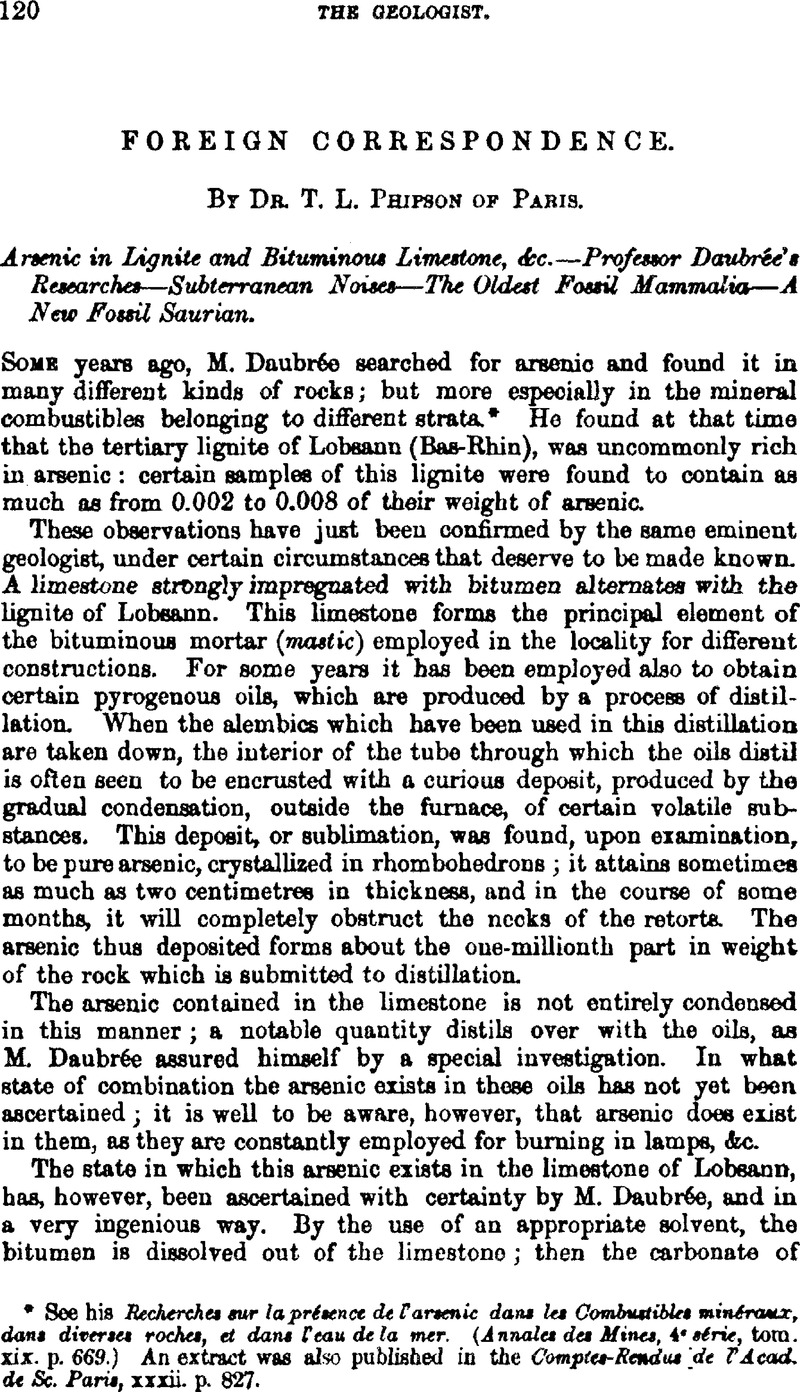No CrossRef data available.

page 120 note * See his Recherches sur la présence de l'arsenic dans les Combustibles minéraux, dans diverses roches, et dans l'eau de la mer. ( Annales des Mines, 4e série, tom. xix. p. 669.Google Scholar) An extract was also published in the Comptes-Rendus de l'Acad, de Sc. Paris, xxxii. p. 827 Google Scholar.
page 121 note * It must be remembered that the address which Dr. Phipson alludes to was delivered before the Geological Society in February of last year, and, if we remember rightly, very shortly, indeed, after the most interesting of M. Daubrée's researches were first published. It is somewhat unusual to notice “sins of omission” in the president of a society; but, as the remarks are evidently kindly intended, we publish them, in order that it may be fully known on the Continent that M. Daubrée's researches are not by any means slighted by English savans. Indeed, they were noticed with much emphasie by the present President of the Geological Society, Professor Phillips, in the anniversary address delivered a few days since.
page 123 note * The Dromotherium sylvestre of Dr. Emmons is another of these “oldest” mammals; and two or three jaws have been obtained from the shales associated with coal-beds in North Carolina, which are certainly of Triassic, and possibly Permian age !—Ed. Geol.
page 123 note † His letter is here translated from the French.
page 123 note ‡ By Mr. Charles Moore, F.G.S., of Bath. See “Siluria,” new edit p. 514. Sir Roderick Murchison says these remains were found “in an agglomerate which fills the fissures of the carboniferous limestone near Frome, Somersetshire:” meaning thereby, we believe, what is usually known as “the dolomitic conglomerate.”—Ed. Geol.